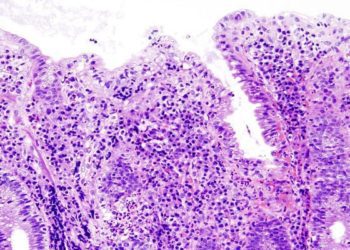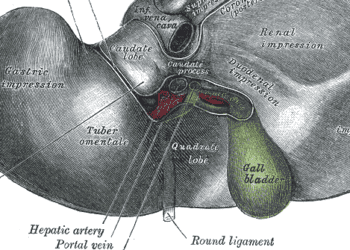Anemia associated with increased risk of developing Crohn’s disease, but not ulcerative colitis
1. Anemia increased the risk of development of Crohn’s disease, inversely to hemoglobin concentration
2. Anemia was not associated with an increased risk of ulcerative colitis.
Evidence Rating Level: 2 (Good)
Though inflammatory bowel disease (IBD) can lead to anemia, whether anemia may be a surrogate marker for the early detection of ulcerative colitis (UC) or Crohn’s disease (CD) is yet to be determined. In this retrospective, population-based cohort study, patients with and without anemia (Hgb level <13g/dL in men, <12g/dL in women, according to WHO guidelines) were followed for new diagnoses of IBD. Information was collected from South Korea’s National Healthcare Insurance Service database which has a biannual screening program for almost all of its citizens. Patients who underwent screening in 2009 were assessed for IBD development with a lag period of one year (n=9,962,064) for a mean follow-up period of 7.3 years. Using an adjusted model that took into account differences due to age, sex, BMI, smoking, alcohol consumption, physical activity, income and GFR, there was a statistically increased likelihood of developing CD in the anemic group compared to the control, aHR 2.084 95% CI, 1.769-2.455 (p<0.001) which was also inversely proportional to hemoglobin concentrations. This model did not take into account urban residence, hypertension, dyslipidemia or metabolic syndrome which had different prevalences among the groups. Additionally, patients who did not have anemia in 2009 but who had developed anemia by their 2011 visit (352,464 patients of 6,696,826 individuals), also had an increased risk for developing CD (aHR 2.763, 95% CI 2.254-3.387). In both 2009 and 2011 analyses, male patients with anemia were more likely to develop CD than female patients (aHR, 1.432 vs. 1.240 and aHR, 4.311 vs. 2.178, respectively). However, there was no difference in risk of developing UC between patients who had anemia and those who did not (aHR, 0.972, 95% CI, 0.880-1.073, p=0.7594). Further studies will need to evaluate the types of anemia and their effects on the extent of disease. Nevertheless, these results support that anemic patients, especially with new diagnoses, may have an increased risk of developing CD, which was inversely proportional to their hemoglobin levels.
Click to read the study in PlosONE
Image: PD
©2020 2 Minute Medicine, Inc. All rights reserved. No works may be reproduced without expressed written consent from 2 Minute Medicine, Inc. Inquire about licensing here. No article should be construed as medical advice and is not intended as such by the authors or by 2 Minute Medicine, Inc.







